-
EXECUTIVE SUMMARY
-
Market Overview
-
Key Findings
-
Market Segmentation
-
Competitive Landscape
-
Challenges and Opportunities
-
Future
-
Outlook
-
MARKET INTRODUCTION
-
Definition
- Research Objective
- Assumption
-
Scope of the study
-
Limitations
-
RESEARCH METHODOLOGY
-
Overview
-
Data Mining
-
Secondary Research
-
Primary Research
- Primary Interviews
- Breakdown of Primary Respondents
-
and Information Gathering Process
-
Forecasting Model
-
Market Size Estimation
- Bottom-Up
- Top-Down Approach
-
Approach
-
Data Triangulation
-
Validation
-
MARKET DYNAMICS
-
Overview
-
Drivers
-
Restraints
-
Opportunities
-
MARKET FACTOR ANALYSIS
-
Value chain Analysis
-
Porter's Five Forces Analysis
- Bargaining Power of Buyers
- Threat of Substitutes
- Intensity
-
Bargaining Power of Suppliers
-
Threat of New Entrants
-
of Rivalry
-
COVID-19 Impact Analysis
- Market Impact Analysis
- Regional Impact
- Opportunity and Threat Analysis
-
INHALATION ANESTHESIA MARKET, BY APPLICATION (USD BILLION)
-
General Surgery
-
Dental Surgery
-
Pediatric Surgery
-
Obstetric Surgery
-
INHALATION ANESTHESIA MARKET, BY PRODUCT TYPE (USD BILLION)
-
Nitrous Oxide
-
Halothane
-
Isoflurane
-
Sevoflurane
-
INHALATION ANESTHESIA MARKET, BY END USE (USD BILLION)
-
Hospitals
-
Outpatient Surgical Centers
-
Ambulatory Surgical Centers
-
INHALATION ANESTHESIA MARKET, BY ROUTE OF ADMINISTRATION (USD BILLION)
-
Inhalation
-
Intravenous
-
INHALATION ANESTHESIA MARKET,
-
BY REGIONAL (USD BILLION)
-
North America
- US
-
Canada
-
Europe
- Germany
- UK
- France
- Russia
- Italy
- Spain
- Rest
-
of Europe
-
APAC
- China
- India
- South Korea
- Malaysia
- Thailand
- Indonesia
- Rest of APAC
-
Japan
-
South America
- Mexico
- Argentina
- Rest of South
-
Brazil
-
America
-
MEA
- GCC Countries
- South Africa
- Rest of MEA
-
COMPETITIVE LANDSCAPE
-
Overview
-
Competitive Analysis
-
Market share Analysis
-
Major Growth Strategy in the Inhalation Anesthesia Market
-
Competitive
-
Benchmarking
-
Leading Players in Terms of Number of Developments in the
-
Inhalation Anesthesia Market
-
Key developments and growth strategies
- New Product Launch/Service Deployment
- Merger & Acquisitions
- Joint Ventures
-
Major Players Financial Matrix
- Major Players R&D Expenditure. 2023
-
Sales and Operating Income
-
COMPANY PROFILES
-
Purdue Pharma
- Financial Overview
- Products Offered
- Key Developments
- SWOT
- Key Strategies
-
Analysis
-
Sandoz
- Financial
- Products Offered
- Key Developments
- Key Strategies
-
Overview
-
SWOT Analysis
-
Teleflex
- Financial
- Products Offered
- Key Developments
- Key Strategies
-
Overview
-
SWOT Analysis
-
Anaesthesia Associates
- Financial Overview
- Products Offered
- Key Developments
- SWOT Analysis
- Key Strategies
-
Smiths Medical
- Financial Overview
- Products Offered
- Key
- SWOT Analysis
- Key Strategies
- Financial Overview
- Products Offered
- Key Developments
- SWOT Analysis
- Key Strategies
-
Developments
-
Halyard Health
-
Meda Pharmaceuticals
- Financial Overview
- Key Developments
- SWOT Analysis
- Key Strategies
-
Products Offered
-
Halocarbon Products Corporation
- Products Offered
- Key Developments
- SWOT Analysis
- Key Strategies
-
Financial Overview
-
Baxter International
- Financial Overview
- Products Offered
- Key
- SWOT Analysis
- Key Strategies
- Financial Overview
- Products Offered
- Key Developments
- SWOT Analysis
- Key
-
Developments
-
Piramal Enterprises
-
Strategies
-
Vygon
- Financial Overview
- Products
- Key Developments
- SWOT Analysis
-
Offered
-
Key Strategies
-
Loma Linda University Medical Center
- Products Offered
- Key Developments
- SWOT Analysis
- Key Strategies
-
Financial Overview
-
Fresenius
- Financial Overview
- Products Offered
- SWOT Analysis
- Key Strategies
-
Kabi
-
Key Developments
-
AbbVie
- Financial Overview
- Products Offered
- Key Developments
- SWOT Analysis
- Key
-
Strategies
-
APPENDIX
-
References
-
Related Reports
-
LIST OF TABLES
-
LIST OF ASSUMPTIONS
-
NORTH
-
AMERICA INHALATION ANESTHESIA MARKET SIZE ESTIMATES & FORECAST, BY APPLICATION,
-
NORTH AMERICA INHALATION ANESTHESIA MARKET
-
SIZE ESTIMATES & FORECAST, BY PRODUCT TYPE, 2019-2035 (USD BILLIONS)
-
TABLE
-
NORTH AMERICA INHALATION ANESTHESIA MARKET SIZE ESTIMATES & FORECAST, BY
-
END USE, 2019-2035 (USD BILLIONS)
-
NORTH AMERICA INHALATION ANESTHESIA
-
MARKET SIZE ESTIMATES & FORECAST, BY ROUTE OF ADMINISTRATION, 2019-2035 (USD
-
BILLIONS)
-
NORTH AMERICA INHALATION ANESTHESIA MARKET SIZE ESTIMATES
-
& FORECAST, BY REGIONAL, 2019-2035 (USD BILLIONS)
-
US INHALATION
-
ANESTHESIA MARKET SIZE ESTIMATES & FORECAST, BY APPLICATION, 2019-2035 (USD
-
BILLIONS)
-
US INHALATION ANESTHESIA MARKET SIZE ESTIMATES & FORECAST,
-
BY PRODUCT TYPE, 2019-2035 (USD BILLIONS)
-
US INHALATION ANESTHESIA
-
MARKET SIZE ESTIMATES & FORECAST, BY END USE, 2019-2035 (USD BILLIONS)
-
TABLE
-
US INHALATION ANESTHESIA MARKET SIZE ESTIMATES & FORECAST, BY ROUTE OF ADMINISTRATION,
-
US INHALATION ANESTHESIA MARKET SIZE ESTIMATES
-
& FORECAST, BY REGIONAL, 2019-2035 (USD BILLIONS)
-
CANADA INHALATION
-
ANESTHESIA MARKET SIZE ESTIMATES & FORECAST, BY APPLICATION, 2019-2035 (USD
-
BILLIONS)
-
CANADA INHALATION ANESTHESIA MARKET SIZE ESTIMATES &
-
FORECAST, BY PRODUCT TYPE, 2019-2035 (USD BILLIONS)
-
CANADA INHALATION
-
ANESTHESIA MARKET SIZE ESTIMATES & FORECAST, BY END USE, 2019-2035 (USD BILLIONS)
-
CANADA INHALATION ANESTHESIA MARKET SIZE ESTIMATES & FORECAST,
-
BY ROUTE OF ADMINISTRATION, 2019-2035 (USD BILLIONS)
-
CANADA INHALATION
-
ANESTHESIA MARKET SIZE ESTIMATES & FORECAST, BY REGIONAL, 2019-2035 (USD BILLIONS)
-
EUROPE INHALATION ANESTHESIA MARKET SIZE ESTIMATES & FORECAST,
-
BY APPLICATION, 2019-2035 (USD BILLIONS)
-
EUROPE INHALATION ANESTHESIA
-
MARKET SIZE ESTIMATES & FORECAST, BY PRODUCT TYPE, 2019-2035 (USD BILLIONS)
-
EUROPE INHALATION ANESTHESIA MARKET SIZE ESTIMATES & FORECAST,
-
BY END USE, 2019-2035 (USD BILLIONS)
-
EUROPE INHALATION ANESTHESIA
-
MARKET SIZE ESTIMATES & FORECAST, BY ROUTE OF ADMINISTRATION, 2019-2035 (USD
-
BILLIONS)
-
EUROPE INHALATION ANESTHESIA MARKET SIZE ESTIMATES &
-
FORECAST, BY REGIONAL, 2019-2035 (USD BILLIONS)
-
GERMANY INHALATION
-
ANESTHESIA MARKET SIZE ESTIMATES & FORECAST, BY APPLICATION, 2019-2035 (USD
-
BILLIONS)
-
GERMANY INHALATION ANESTHESIA MARKET SIZE ESTIMATES &
-
FORECAST, BY PRODUCT TYPE, 2019-2035 (USD BILLIONS)
-
GERMANY INHALATION
-
ANESTHESIA MARKET SIZE ESTIMATES & FORECAST, BY END USE, 2019-2035 (USD BILLIONS)
-
GERMANY INHALATION ANESTHESIA MARKET SIZE ESTIMATES & FORECAST,
-
BY ROUTE OF ADMINISTRATION, 2019-2035 (USD BILLIONS)
-
GERMANY INHALATION
-
ANESTHESIA MARKET SIZE ESTIMATES & FORECAST, BY REGIONAL, 2019-2035 (USD BILLIONS)
-
UK INHALATION ANESTHESIA MARKET SIZE ESTIMATES & FORECAST, BY
-
APPLICATION, 2019-2035 (USD BILLIONS)
-
UK INHALATION ANESTHESIA MARKET
-
SIZE ESTIMATES & FORECAST, BY PRODUCT TYPE, 2019-2035 (USD BILLIONS)
-
TABLE
-
UK INHALATION ANESTHESIA MARKET SIZE ESTIMATES & FORECAST, BY END USE, 2019-2035
-
(USD BILLIONS)
-
UK INHALATION ANESTHESIA MARKET SIZE ESTIMATES &
-
FORECAST, BY ROUTE OF ADMINISTRATION, 2019-2035 (USD BILLIONS)
-
UK
-
INHALATION ANESTHESIA MARKET SIZE ESTIMATES & FORECAST, BY REGIONAL, 2019-2035
-
(USD BILLIONS)
-
FRANCE INHALATION ANESTHESIA MARKET SIZE ESTIMATES
-
& FORECAST, BY APPLICATION, 2019-2035 (USD BILLIONS)
-
FRANCE
-
INHALATION ANESTHESIA MARKET SIZE ESTIMATES & FORECAST, BY PRODUCT TYPE, 2019-2035
-
(USD BILLIONS)
-
FRANCE INHALATION ANESTHESIA MARKET SIZE ESTIMATES
-
& FORECAST, BY END USE, 2019-2035 (USD BILLIONS)
-
FRANCE INHALATION
-
ANESTHESIA MARKET SIZE ESTIMATES & FORECAST, BY ROUTE OF ADMINISTRATION, 2019-2035
-
(USD BILLIONS)
-
FRANCE INHALATION ANESTHESIA MARKET SIZE ESTIMATES
-
& FORECAST, BY REGIONAL, 2019-2035 (USD BILLIONS)
-
RUSSIA INHALATION
-
ANESTHESIA MARKET SIZE ESTIMATES & FORECAST, BY APPLICATION, 2019-2035 (USD
-
BILLIONS)
-
RUSSIA INHALATION ANESTHESIA MARKET SIZE ESTIMATES &
-
FORECAST, BY PRODUCT TYPE, 2019-2035 (USD BILLIONS)
-
RUSSIA INHALATION
-
ANESTHESIA MARKET SIZE ESTIMATES & FORECAST, BY END USE, 2019-2035 (USD BILLIONS)
-
RUSSIA INHALATION ANESTHESIA MARKET SIZE ESTIMATES & FORECAST,
-
BY ROUTE OF ADMINISTRATION, 2019-2035 (USD BILLIONS)
-
RUSSIA INHALATION
-
ANESTHESIA MARKET SIZE ESTIMATES & FORECAST, BY REGIONAL, 2019-2035 (USD BILLIONS)
-
ITALY INHALATION ANESTHESIA MARKET SIZE ESTIMATES & FORECAST,
-
BY APPLICATION, 2019-2035 (USD BILLIONS)
-
ITALY INHALATION ANESTHESIA
-
MARKET SIZE ESTIMATES & FORECAST, BY PRODUCT TYPE, 2019-2035 (USD BILLIONS)
-
ITALY INHALATION ANESTHESIA MARKET SIZE ESTIMATES & FORECAST,
-
BY END USE, 2019-2035 (USD BILLIONS)
-
ITALY INHALATION ANESTHESIA
-
MARKET SIZE ESTIMATES & FORECAST, BY ROUTE OF ADMINISTRATION, 2019-2035 (USD
-
BILLIONS)
-
ITALY INHALATION ANESTHESIA MARKET SIZE ESTIMATES &
-
FORECAST, BY REGIONAL, 2019-2035 (USD BILLIONS)
-
SPAIN INHALATION
-
ANESTHESIA MARKET SIZE ESTIMATES & FORECAST, BY APPLICATION, 2019-2035 (USD
-
BILLIONS)
-
SPAIN INHALATION ANESTHESIA MARKET SIZE ESTIMATES &
-
FORECAST, BY PRODUCT TYPE, 2019-2035 (USD BILLIONS)
-
SPAIN INHALATION
-
ANESTHESIA MARKET SIZE ESTIMATES & FORECAST, BY END USE, 2019-2035 (USD BILLIONS)
-
SPAIN INHALATION ANESTHESIA MARKET SIZE ESTIMATES & FORECAST,
-
BY ROUTE OF ADMINISTRATION, 2019-2035 (USD BILLIONS)
-
SPAIN INHALATION
-
ANESTHESIA MARKET SIZE ESTIMATES & FORECAST, BY REGIONAL, 2019-2035 (USD BILLIONS)
-
REST OF EUROPE INHALATION ANESTHESIA MARKET SIZE ESTIMATES &
-
FORECAST, BY APPLICATION, 2019-2035 (USD BILLIONS)
-
REST OF EUROPE
-
INHALATION ANESTHESIA MARKET SIZE ESTIMATES & FORECAST, BY PRODUCT TYPE, 2019-2035
-
(USD BILLIONS)
-
REST OF EUROPE INHALATION ANESTHESIA MARKET SIZE
-
ESTIMATES & FORECAST, BY END USE, 2019-2035 (USD BILLIONS)
-
REST
-
OF EUROPE INHALATION ANESTHESIA MARKET SIZE ESTIMATES & FORECAST, BY ROUTE OF
-
ADMINISTRATION, 2019-2035 (USD BILLIONS)
-
REST OF EUROPE INHALATION
-
ANESTHESIA MARKET SIZE ESTIMATES & FORECAST, BY REGIONAL, 2019-2035 (USD BILLIONS)
-
APAC INHALATION ANESTHESIA MARKET SIZE ESTIMATES & FORECAST,
-
BY APPLICATION, 2019-2035 (USD BILLIONS)
-
APAC INHALATION ANESTHESIA
-
MARKET SIZE ESTIMATES & FORECAST, BY PRODUCT TYPE, 2019-2035 (USD BILLIONS)
-
APAC INHALATION ANESTHESIA MARKET SIZE ESTIMATES & FORECAST,
-
BY END USE, 2019-2035 (USD BILLIONS)
-
APAC INHALATION ANESTHESIA
-
MARKET SIZE ESTIMATES & FORECAST, BY ROUTE OF ADMINISTRATION, 2019-2035 (USD
-
BILLIONS)
-
APAC INHALATION ANESTHESIA MARKET SIZE ESTIMATES &
-
FORECAST, BY REGIONAL, 2019-2035 (USD BILLIONS)
-
CHINA INHALATION
-
ANESTHESIA MARKET SIZE ESTIMATES & FORECAST, BY APPLICATION, 2019-2035 (USD
-
BILLIONS)
-
CHINA INHALATION ANESTHESIA MARKET SIZE ESTIMATES &
-
FORECAST, BY PRODUCT TYPE, 2019-2035 (USD BILLIONS)
-
CHINA INHALATION
-
ANESTHESIA MARKET SIZE ESTIMATES & FORECAST, BY END USE, 2019-2035 (USD BILLIONS)
-
CHINA INHALATION ANESTHESIA MARKET SIZE ESTIMATES & FORECAST,
-
BY ROUTE OF ADMINISTRATION, 2019-2035 (USD BILLIONS)
-
CHINA INHALATION
-
ANESTHESIA MARKET SIZE ESTIMATES & FORECAST, BY REGIONAL, 2019-2035 (USD BILLIONS)
-
INDIA INHALATION ANESTHESIA MARKET SIZE ESTIMATES & FORECAST,
-
BY APPLICATION, 2019-2035 (USD BILLIONS)
-
INDIA INHALATION ANESTHESIA
-
MARKET SIZE ESTIMATES & FORECAST, BY PRODUCT TYPE, 2019-2035 (USD BILLIONS)
-
INDIA INHALATION ANESTHESIA MARKET SIZE ESTIMATES & FORECAST,
-
BY END USE, 2019-2035 (USD BILLIONS)
-
INDIA INHALATION ANESTHESIA
-
MARKET SIZE ESTIMATES & FORECAST, BY ROUTE OF ADMINISTRATION, 2019-2035 (USD
-
BILLIONS)
-
INDIA INHALATION ANESTHESIA MARKET SIZE ESTIMATES &
-
FORECAST, BY REGIONAL, 2019-2035 (USD BILLIONS)
-
JAPAN INHALATION
-
ANESTHESIA MARKET SIZE ESTIMATES & FORECAST, BY APPLICATION, 2019-2035 (USD
-
BILLIONS)
-
JAPAN INHALATION ANESTHESIA MARKET SIZE ESTIMATES &
-
FORECAST, BY PRODUCT TYPE, 2019-2035 (USD BILLIONS)
-
JAPAN INHALATION
-
ANESTHESIA MARKET SIZE ESTIMATES & FORECAST, BY END USE, 2019-2035 (USD BILLIONS)
-
JAPAN INHALATION ANESTHESIA MARKET SIZE ESTIMATES & FORECAST,
-
BY ROUTE OF ADMINISTRATION, 2019-2035 (USD BILLIONS)
-
JAPAN INHALATION
-
ANESTHESIA MARKET SIZE ESTIMATES & FORECAST, BY REGIONAL, 2019-2035 (USD BILLIONS)
-
SOUTH KOREA INHALATION ANESTHESIA MARKET SIZE ESTIMATES & FORECAST,
-
BY APPLICATION, 2019-2035 (USD BILLIONS)
-
SOUTH KOREA INHALATION
-
ANESTHESIA MARKET SIZE ESTIMATES & FORECAST, BY PRODUCT TYPE, 2019-2035 (USD
-
BILLIONS)
-
SOUTH KOREA INHALATION ANESTHESIA MARKET SIZE ESTIMATES
-
& FORECAST, BY END USE, 2019-2035 (USD BILLIONS)
-
SOUTH KOREA
-
INHALATION ANESTHESIA MARKET SIZE ESTIMATES & FORECAST, BY ROUTE OF ADMINISTRATION,
-
SOUTH KOREA INHALATION ANESTHESIA MARKET
-
SIZE ESTIMATES & FORECAST, BY REGIONAL, 2019-2035 (USD BILLIONS)
-
TABLE
-
MALAYSIA INHALATION ANESTHESIA MARKET SIZE ESTIMATES & FORECAST, BY APPLICATION,
-
MALAYSIA INHALATION ANESTHESIA MARKET SIZE
-
ESTIMATES & FORECAST, BY PRODUCT TYPE, 2019-2035 (USD BILLIONS)
-
TABLE
-
MALAYSIA INHALATION ANESTHESIA MARKET SIZE ESTIMATES & FORECAST, BY END
-
USE, 2019-2035 (USD BILLIONS)
-
MALAYSIA INHALATION ANESTHESIA MARKET
-
SIZE ESTIMATES & FORECAST, BY ROUTE OF ADMINISTRATION, 2019-2035 (USD BILLIONS)
-
MALAYSIA INHALATION ANESTHESIA MARKET SIZE ESTIMATES & FORECAST,
-
BY REGIONAL, 2019-2035 (USD BILLIONS)
-
THAILAND INHALATION ANESTHESIA
-
MARKET SIZE ESTIMATES & FORECAST, BY APPLICATION, 2019-2035 (USD BILLIONS)
-
THAILAND INHALATION ANESTHESIA MARKET SIZE ESTIMATES & FORECAST,
-
BY PRODUCT TYPE, 2019-2035 (USD BILLIONS)
-
THAILAND INHALATION ANESTHESIA
-
MARKET SIZE ESTIMATES & FORECAST, BY END USE, 2019-2035 (USD BILLIONS)
-
TABLE
-
THAILAND INHALATION ANESTHESIA MARKET SIZE ESTIMATES & FORECAST, BY ROUTE
-
OF ADMINISTRATION, 2019-2035 (USD BILLIONS)
-
THAILAND INHALATION
-
ANESTHESIA MARKET SIZE ESTIMATES & FORECAST, BY REGIONAL, 2019-2035 (USD BILLIONS)
-
INDONESIA INHALATION ANESTHESIA MARKET SIZE ESTIMATES & FORECAST,
-
BY APPLICATION, 2019-2035 (USD BILLIONS)
-
INDONESIA INHALATION ANESTHESIA
-
MARKET SIZE ESTIMATES & FORECAST, BY PRODUCT TYPE, 2019-2035 (USD BILLIONS)
-
INDONESIA INHALATION ANESTHESIA MARKET SIZE ESTIMATES & FORECAST,
-
BY END USE, 2019-2035 (USD BILLIONS)
-
INDONESIA INHALATION ANESTHESIA
-
MARKET SIZE ESTIMATES & FORECAST, BY ROUTE OF ADMINISTRATION, 2019-2035 (USD
-
BILLIONS)
-
INDONESIA INHALATION ANESTHESIA MARKET SIZE ESTIMATES
-
& FORECAST, BY REGIONAL, 2019-2035 (USD BILLIONS)
-
REST OF APAC
-
INHALATION ANESTHESIA MARKET SIZE ESTIMATES & FORECAST, BY APPLICATION, 2019-2035
-
(USD BILLIONS)
-
REST OF APAC INHALATION ANESTHESIA MARKET SIZE ESTIMATES
-
& FORECAST, BY PRODUCT TYPE, 2019-2035 (USD BILLIONS)
-
REST OF
-
APAC INHALATION ANESTHESIA MARKET SIZE ESTIMATES & FORECAST, BY END USE, 2019-2035
-
(USD BILLIONS)
-
REST OF APAC INHALATION ANESTHESIA MARKET SIZE ESTIMATES
-
& FORECAST, BY ROUTE OF ADMINISTRATION, 2019-2035 (USD BILLIONS)
-
TABLE
-
REST OF APAC INHALATION ANESTHESIA MARKET SIZE ESTIMATES & FORECAST, BY
-
REGIONAL, 2019-2035 (USD BILLIONS)
-
SOUTH AMERICA INHALATION ANESTHESIA
-
MARKET SIZE ESTIMATES & FORECAST, BY APPLICATION, 2019-2035 (USD BILLIONS)
-
SOUTH AMERICA INHALATION ANESTHESIA MARKET SIZE ESTIMATES & FORECAST,
-
BY PRODUCT TYPE, 2019-2035 (USD BILLIONS)
-
SOUTH AMERICA INHALATION
-
ANESTHESIA MARKET SIZE ESTIMATES & FORECAST, BY END USE, 2019-2035 (USD BILLIONS)
-
SOUTH AMERICA INHALATION ANESTHESIA MARKET SIZE ESTIMATES &
-
FORECAST, BY ROUTE OF ADMINISTRATION, 2019-2035 (USD BILLIONS)
-
TABLE 106.
-
SOUTH AMERICA INHALATION ANESTHESIA MARKET SIZE ESTIMATES & FORECAST, BY REGIONAL,
-
BRAZIL INHALATION ANESTHESIA MARKET SIZE
-
ESTIMATES & FORECAST, BY APPLICATION, 2019-2035 (USD BILLIONS)
-
TABLE 108.
-
BRAZIL INHALATION ANESTHESIA MARKET SIZE ESTIMATES & FORECAST, BY PRODUCT TYPE,
-
BRAZIL INHALATION ANESTHESIA MARKET SIZE
-
ESTIMATES & FORECAST, BY END USE, 2019-2035 (USD BILLIONS)
-
TABLE 110.
-
BRAZIL INHALATION ANESTHESIA MARKET SIZE ESTIMATES & FORECAST, BY ROUTE OF ADMINISTRATION,
-
BRAZIL INHALATION ANESTHESIA MARKET SIZE
-
ESTIMATES & FORECAST, BY REGIONAL, 2019-2035 (USD BILLIONS)
-
TABLE 112.
-
MEXICO INHALATION ANESTHESIA MARKET SIZE ESTIMATES & FORECAST, BY APPLICATION,
-
MEXICO INHALATION ANESTHESIA MARKET SIZE
-
ESTIMATES & FORECAST, BY PRODUCT TYPE, 2019-2035 (USD BILLIONS)
-
TABLE
-
MEXICO INHALATION ANESTHESIA MARKET SIZE ESTIMATES & FORECAST, BY END USE,
-
MEXICO INHALATION ANESTHESIA MARKET SIZE
-
ESTIMATES & FORECAST, BY ROUTE OF ADMINISTRATION, 2019-2035 (USD BILLIONS)
-
MEXICO INHALATION ANESTHESIA MARKET SIZE ESTIMATES & FORECAST,
-
BY REGIONAL, 2019-2035 (USD BILLIONS)
-
ARGENTINA INHALATION ANESTHESIA
-
MARKET SIZE ESTIMATES & FORECAST, BY APPLICATION, 2019-2035 (USD BILLIONS)
-
ARGENTINA INHALATION ANESTHESIA MARKET SIZE ESTIMATES & FORECAST,
-
BY PRODUCT TYPE, 2019-2035 (USD BILLIONS)
-
ARGENTINA INHALATION
-
ANESTHESIA MARKET SIZE ESTIMATES & FORECAST, BY END USE, 2019-2035 (USD BILLIONS)
-
ARGENTINA INHALATION ANESTHESIA MARKET SIZE ESTIMATES & FORECAST,
-
BY ROUTE OF ADMINISTRATION, 2019-2035 (USD BILLIONS)
-
ARGENTINA
-
INHALATION ANESTHESIA MARKET SIZE ESTIMATES & FORECAST, BY REGIONAL, 2019-2035
-
(USD BILLIONS)
-
REST OF SOUTH AMERICA INHALATION ANESTHESIA MARKET
-
SIZE ESTIMATES & FORECAST, BY APPLICATION, 2019-2035 (USD BILLIONS)
-
TABLE
-
REST OF SOUTH AMERICA INHALATION ANESTHESIA MARKET SIZE ESTIMATES & FORECAST,
-
BY PRODUCT TYPE, 2019-2035 (USD BILLIONS)
-
REST OF SOUTH AMERICA
-
INHALATION ANESTHESIA MARKET SIZE ESTIMATES & FORECAST, BY END USE, 2019-2035
-
(USD BILLIONS)
-
REST OF SOUTH AMERICA INHALATION ANESTHESIA MARKET
-
SIZE ESTIMATES & FORECAST, BY ROUTE OF ADMINISTRATION, 2019-2035 (USD BILLIONS)
-
REST OF SOUTH AMERICA INHALATION ANESTHESIA MARKET SIZE ESTIMATES
-
& FORECAST, BY REGIONAL, 2019-2035 (USD BILLIONS)
-
MEA INHALATION
-
ANESTHESIA MARKET SIZE ESTIMATES & FORECAST, BY APPLICATION, 2019-2035 (USD
-
BILLIONS)
-
MEA INHALATION ANESTHESIA MARKET SIZE ESTIMATES &
-
FORECAST, BY PRODUCT TYPE, 2019-2035 (USD BILLIONS)
-
MEA INHALATION
-
ANESTHESIA MARKET SIZE ESTIMATES & FORECAST, BY END USE, 2019-2035 (USD BILLIONS)
-
MEA INHALATION ANESTHESIA MARKET SIZE ESTIMATES & FORECAST,
-
BY ROUTE OF ADMINISTRATION, 2019-2035 (USD BILLIONS)
-
MEA INHALATION
-
ANESTHESIA MARKET SIZE ESTIMATES & FORECAST, BY REGIONAL, 2019-2035 (USD BILLIONS)
-
GCC COUNTRIES INHALATION ANESTHESIA MARKET SIZE ESTIMATES &
-
FORECAST, BY APPLICATION, 2019-2035 (USD BILLIONS)
-
GCC COUNTRIES
-
INHALATION ANESTHESIA MARKET SIZE ESTIMATES & FORECAST, BY PRODUCT TYPE, 2019-2035
-
(USD BILLIONS)
-
GCC COUNTRIES INHALATION ANESTHESIA MARKET SIZE
-
ESTIMATES & FORECAST, BY END USE, 2019-2035 (USD BILLIONS)
-
TABLE 135.
-
GCC COUNTRIES INHALATION ANESTHESIA MARKET SIZE ESTIMATES & FORECAST, BY ROUTE
-
OF ADMINISTRATION, 2019-2035 (USD BILLIONS)
-
GCC COUNTRIES INHALATION
-
ANESTHESIA MARKET SIZE ESTIMATES & FORECAST, BY REGIONAL, 2019-2035 (USD BILLIONS)
-
SOUTH AFRICA INHALATION ANESTHESIA MARKET SIZE ESTIMATES &
-
FORECAST, BY APPLICATION, 2019-2035 (USD BILLIONS)
-
SOUTH AFRICA
-
INHALATION ANESTHESIA MARKET SIZE ESTIMATES & FORECAST, BY PRODUCT TYPE, 2019-2035
-
(USD BILLIONS)
-
SOUTH AFRICA INHALATION ANESTHESIA MARKET SIZE ESTIMATES
-
& FORECAST, BY END USE, 2019-2035 (USD BILLIONS)
-
SOUTH AFRICA
-
INHALATION ANESTHESIA MARKET SIZE ESTIMATES & FORECAST, BY ROUTE OF ADMINISTRATION,
-
SOUTH AFRICA INHALATION ANESTHESIA MARKET
-
SIZE ESTIMATES & FORECAST, BY REGIONAL, 2019-2035 (USD BILLIONS)
-
TABLE
-
REST OF MEA INHALATION ANESTHESIA MARKET SIZE ESTIMATES & FORECAST, BY
-
APPLICATION, 2019-2035 (USD BILLIONS)
-
REST OF MEA INHALATION ANESTHESIA
-
MARKET SIZE ESTIMATES & FORECAST, BY PRODUCT TYPE, 2019-2035 (USD BILLIONS)
-
REST OF MEA INHALATION ANESTHESIA MARKET SIZE ESTIMATES & FORECAST,
-
BY END USE, 2019-2035 (USD BILLIONS)
-
REST OF MEA INHALATION ANESTHESIA
-
MARKET SIZE ESTIMATES & FORECAST, BY ROUTE OF ADMINISTRATION, 2019-2035 (USD
-
BILLIONS)
-
REST OF MEA INHALATION ANESTHESIA MARKET SIZE ESTIMATES
-
& FORECAST, BY REGIONAL, 2019-2035 (USD BILLIONS)
-
PRODUCT LAUNCH/PRODUCT
-
DEVELOPMENT/APPROVAL
-
ACQUISITION/PARTNERSHIP
-
LIST
-
OF FIGURES
-
MARKET SYNOPSIS
-
NORTH AMERICA INHALATION
-
ANESTHESIA MARKET ANALYSIS
-
US INHALATION ANESTHESIA MARKET ANALYSIS
-
BY APPLICATION
-
US INHALATION ANESTHESIA MARKET ANALYSIS BY PRODUCT
-
TYPE
-
US INHALATION ANESTHESIA MARKET ANALYSIS BY END USE
-
FIGURE
-
US INHALATION ANESTHESIA MARKET ANALYSIS BY ROUTE OF ADMINISTRATION
-
FIGURE
-
US INHALATION ANESTHESIA MARKET ANALYSIS BY REGIONAL
-
CANADA INHALATION
-
ANESTHESIA MARKET ANALYSIS BY APPLICATION
-
CANADA INHALATION ANESTHESIA
-
MARKET ANALYSIS BY PRODUCT TYPE
-
CANADA INHALATION ANESTHESIA MARKET
-
ANALYSIS BY END USE
-
CANADA INHALATION ANESTHESIA MARKET ANALYSIS
-
BY ROUTE OF ADMINISTRATION
-
CANADA INHALATION ANESTHESIA MARKET
-
ANALYSIS BY REGIONAL
-
EUROPE INHALATION ANESTHESIA MARKET ANALYSIS
-
GERMANY INHALATION ANESTHESIA MARKET ANALYSIS BY APPLICATION
-
GERMANY INHALATION ANESTHESIA MARKET ANALYSIS BY PRODUCT TYPE
-
FIGURE
-
GERMANY INHALATION ANESTHESIA MARKET ANALYSIS BY END USE
-
GERMANY
-
INHALATION ANESTHESIA MARKET ANALYSIS BY ROUTE OF ADMINISTRATION
-
FIGURE 18.
-
GERMANY INHALATION ANESTHESIA MARKET ANALYSIS BY REGIONAL
-
UK INHALATION
-
ANESTHESIA MARKET ANALYSIS BY APPLICATION
-
UK INHALATION ANESTHESIA
-
MARKET ANALYSIS BY PRODUCT TYPE
-
UK INHALATION ANESTHESIA MARKET
-
ANALYSIS BY END USE
-
UK INHALATION ANESTHESIA MARKET ANALYSIS BY
-
ROUTE OF ADMINISTRATION
-
UK INHALATION ANESTHESIA MARKET ANALYSIS
-
BY REGIONAL
-
FRANCE INHALATION ANESTHESIA MARKET ANALYSIS BY APPLICATION
-
FRANCE INHALATION ANESTHESIA MARKET ANALYSIS BY PRODUCT TYPE
-
FRANCE INHALATION ANESTHESIA MARKET ANALYSIS BY END USE
-
FIGURE
-
FRANCE INHALATION ANESTHESIA MARKET ANALYSIS BY ROUTE OF ADMINISTRATION
-
FRANCE INHALATION ANESTHESIA MARKET ANALYSIS BY REGIONAL
-
FIGURE
-
RUSSIA INHALATION ANESTHESIA MARKET ANALYSIS BY APPLICATION
-
FIGURE 30.
-
RUSSIA INHALATION ANESTHESIA MARKET ANALYSIS BY PRODUCT TYPE
-
RUSSIA
-
INHALATION ANESTHESIA MARKET ANALYSIS BY END USE
-
RUSSIA INHALATION
-
ANESTHESIA MARKET ANALYSIS BY ROUTE OF ADMINISTRATION
-
RUSSIA INHALATION
-
ANESTHESIA MARKET ANALYSIS BY REGIONAL
-
ITALY INHALATION ANESTHESIA
-
MARKET ANALYSIS BY APPLICATION
-
ITALY INHALATION ANESTHESIA MARKET
-
ANALYSIS BY PRODUCT TYPE
-
ITALY INHALATION ANESTHESIA MARKET ANALYSIS
-
BY END USE
-
ITALY INHALATION ANESTHESIA MARKET ANALYSIS BY ROUTE
-
OF ADMINISTRATION
-
ITALY INHALATION ANESTHESIA MARKET ANALYSIS BY
-
REGIONAL
-
SPAIN INHALATION ANESTHESIA MARKET ANALYSIS BY APPLICATION
-
SPAIN INHALATION ANESTHESIA MARKET ANALYSIS BY PRODUCT TYPE
-
SPAIN INHALATION ANESTHESIA MARKET ANALYSIS BY END USE
-
FIGURE
-
SPAIN INHALATION ANESTHESIA MARKET ANALYSIS BY ROUTE OF ADMINISTRATION
-
FIGURE
-
SPAIN INHALATION ANESTHESIA MARKET ANALYSIS BY REGIONAL
-
REST
-
OF EUROPE INHALATION ANESTHESIA MARKET ANALYSIS BY APPLICATION
-
FIGURE 45.
-
REST OF EUROPE INHALATION ANESTHESIA MARKET ANALYSIS BY PRODUCT TYPE
-
FIGURE
-
REST OF EUROPE INHALATION ANESTHESIA MARKET ANALYSIS BY END USE
-
FIGURE
-
REST OF EUROPE INHALATION ANESTHESIA MARKET ANALYSIS BY ROUTE OF ADMINISTRATION
-
REST OF EUROPE INHALATION ANESTHESIA MARKET ANALYSIS BY REGIONAL
-
APAC INHALATION ANESTHESIA MARKET ANALYSIS
-
CHINA
-
INHALATION ANESTHESIA MARKET ANALYSIS BY APPLICATION
-
CHINA INHALATION
-
ANESTHESIA MARKET ANALYSIS BY PRODUCT TYPE
-
CHINA INHALATION ANESTHESIA
-
MARKET ANALYSIS BY END USE
-
CHINA INHALATION ANESTHESIA MARKET ANALYSIS
-
BY ROUTE OF ADMINISTRATION
-
CHINA INHALATION ANESTHESIA MARKET ANALYSIS
-
BY REGIONAL
-
INDIA INHALATION ANESTHESIA MARKET ANALYSIS BY APPLICATION
-
INDIA INHALATION ANESTHESIA MARKET ANALYSIS BY PRODUCT TYPE
-
INDIA INHALATION ANESTHESIA MARKET ANALYSIS BY END USE
-
FIGURE
-
INDIA INHALATION ANESTHESIA MARKET ANALYSIS BY ROUTE OF ADMINISTRATION
-
FIGURE
-
INDIA INHALATION ANESTHESIA MARKET ANALYSIS BY REGIONAL
-
JAPAN
-
INHALATION ANESTHESIA MARKET ANALYSIS BY APPLICATION
-
JAPAN INHALATION
-
ANESTHESIA MARKET ANALYSIS BY PRODUCT TYPE
-
JAPAN INHALATION ANESTHESIA
-
MARKET ANALYSIS BY END USE
-
JAPAN INHALATION ANESTHESIA MARKET ANALYSIS
-
BY ROUTE OF ADMINISTRATION
-
JAPAN INHALATION ANESTHESIA MARKET ANALYSIS
-
BY REGIONAL
-
SOUTH KOREA INHALATION ANESTHESIA MARKET ANALYSIS BY
-
APPLICATION
-
SOUTH KOREA INHALATION ANESTHESIA MARKET ANALYSIS BY
-
PRODUCT TYPE
-
SOUTH KOREA INHALATION ANESTHESIA MARKET ANALYSIS
-
BY END USE
-
SOUTH KOREA INHALATION ANESTHESIA MARKET ANALYSIS BY
-
ROUTE OF ADMINISTRATION
-
SOUTH KOREA INHALATION ANESTHESIA MARKET
-
ANALYSIS BY REGIONAL
-
MALAYSIA INHALATION ANESTHESIA MARKET ANALYSIS
-
BY APPLICATION
-
MALAYSIA INHALATION ANESTHESIA MARKET ANALYSIS BY
-
PRODUCT TYPE
-
MALAYSIA INHALATION ANESTHESIA MARKET ANALYSIS BY
-
END USE
-
MALAYSIA INHALATION ANESTHESIA MARKET ANALYSIS BY ROUTE
-
OF ADMINISTRATION
-
MALAYSIA INHALATION ANESTHESIA MARKET ANALYSIS
-
BY REGIONAL
-
THAILAND INHALATION ANESTHESIA MARKET ANALYSIS BY APPLICATION
-
THAILAND INHALATION ANESTHESIA MARKET ANALYSIS BY PRODUCT TYPE
-
THAILAND INHALATION ANESTHESIA MARKET ANALYSIS BY END USE
-
FIGURE
-
THAILAND INHALATION ANESTHESIA MARKET ANALYSIS BY ROUTE OF ADMINISTRATION
-
THAILAND INHALATION ANESTHESIA MARKET ANALYSIS BY REGIONAL
-
FIGURE
-
INDONESIA INHALATION ANESTHESIA MARKET ANALYSIS BY APPLICATION
-
FIGURE
-
INDONESIA INHALATION ANESTHESIA MARKET ANALYSIS BY PRODUCT TYPE
-
FIGURE
-
INDONESIA INHALATION ANESTHESIA MARKET ANALYSIS BY END USE
-
FIGURE 83.
-
INDONESIA INHALATION ANESTHESIA MARKET ANALYSIS BY ROUTE OF ADMINISTRATION
-
FIGURE
-
INDONESIA INHALATION ANESTHESIA MARKET ANALYSIS BY REGIONAL
-
FIGURE 85.
-
REST OF APAC INHALATION ANESTHESIA MARKET ANALYSIS BY APPLICATION
-
FIGURE 86.
-
REST OF APAC INHALATION ANESTHESIA MARKET ANALYSIS BY PRODUCT TYPE
-
FIGURE
-
REST OF APAC INHALATION ANESTHESIA MARKET ANALYSIS BY END USE
-
FIGURE 88.
-
REST OF APAC INHALATION ANESTHESIA MARKET ANALYSIS BY ROUTE OF ADMINISTRATION
-
REST OF APAC INHALATION ANESTHESIA MARKET ANALYSIS BY REGIONAL
-
SOUTH AMERICA INHALATION ANESTHESIA MARKET ANALYSIS
-
FIGURE 91.
-
BRAZIL INHALATION ANESTHESIA MARKET ANALYSIS BY APPLICATION
-
BRAZIL
-
INHALATION ANESTHESIA MARKET ANALYSIS BY PRODUCT TYPE
-
BRAZIL INHALATION
-
ANESTHESIA MARKET ANALYSIS BY END USE
-
BRAZIL INHALATION ANESTHESIA
-
MARKET ANALYSIS BY ROUTE OF ADMINISTRATION
-
BRAZIL INHALATION ANESTHESIA
-
MARKET ANALYSIS BY REGIONAL
-
MEXICO INHALATION ANESTHESIA MARKET
-
ANALYSIS BY APPLICATION
-
MEXICO INHALATION ANESTHESIA MARKET ANALYSIS
-
BY PRODUCT TYPE
-
MEXICO INHALATION ANESTHESIA MARKET ANALYSIS BY
-
END USE
-
MEXICO INHALATION ANESTHESIA MARKET ANALYSIS BY ROUTE OF
-
ADMINISTRATION
-
MEXICO INHALATION ANESTHESIA MARKET ANALYSIS BY
-
REGIONAL
-
ARGENTINA INHALATION ANESTHESIA MARKET ANALYSIS BY APPLICATION
-
ARGENTINA INHALATION ANESTHESIA MARKET ANALYSIS BY PRODUCT TYPE
-
ARGENTINA INHALATION ANESTHESIA MARKET ANALYSIS BY END USE
-
ARGENTINA INHALATION ANESTHESIA MARKET ANALYSIS BY ROUTE OF ADMINISTRATION
-
ARGENTINA INHALATION ANESTHESIA MARKET ANALYSIS BY REGIONAL
-
REST OF SOUTH AMERICA INHALATION ANESTHESIA MARKET ANALYSIS BY APPLICATION
-
REST OF SOUTH AMERICA INHALATION ANESTHESIA MARKET ANALYSIS BY
-
PRODUCT TYPE
-
REST OF SOUTH AMERICA INHALATION ANESTHESIA MARKET
-
ANALYSIS BY END USE
-
REST OF SOUTH AMERICA INHALATION ANESTHESIA
-
MARKET ANALYSIS BY ROUTE OF ADMINISTRATION
-
REST OF SOUTH AMERICA
-
INHALATION ANESTHESIA MARKET ANALYSIS BY REGIONAL
-
MEA INHALATION
-
ANESTHESIA MARKET ANALYSIS
-
GCC COUNTRIES INHALATION ANESTHESIA
-
MARKET ANALYSIS BY APPLICATION
-
GCC COUNTRIES INHALATION ANESTHESIA
-
MARKET ANALYSIS BY PRODUCT TYPE
-
GCC COUNTRIES INHALATION ANESTHESIA
-
MARKET ANALYSIS BY END USE
-
GCC COUNTRIES INHALATION ANESTHESIA
-
MARKET ANALYSIS BY ROUTE OF ADMINISTRATION
-
GCC COUNTRIES INHALATION
-
ANESTHESIA MARKET ANALYSIS BY REGIONAL
-
SOUTH AFRICA INHALATION
-
ANESTHESIA MARKET ANALYSIS BY APPLICATION
-
SOUTH AFRICA INHALATION
-
ANESTHESIA MARKET ANALYSIS BY PRODUCT TYPE
-
SOUTH AFRICA INHALATION
-
ANESTHESIA MARKET ANALYSIS BY END USE
-
SOUTH AFRICA INHALATION
-
ANESTHESIA MARKET ANALYSIS BY ROUTE OF ADMINISTRATION
-
SOUTH AFRICA
-
INHALATION ANESTHESIA MARKET ANALYSIS BY REGIONAL
-
REST OF MEA
-
INHALATION ANESTHESIA MARKET ANALYSIS BY APPLICATION
-
REST OF MEA
-
INHALATION ANESTHESIA MARKET ANALYSIS BY PRODUCT TYPE
-
REST OF
-
MEA INHALATION ANESTHESIA MARKET ANALYSIS BY END USE
-
REST OF MEA
-
INHALATION ANESTHESIA MARKET ANALYSIS BY ROUTE OF ADMINISTRATION
-
FIGURE 126.
-
REST OF MEA INHALATION ANESTHESIA MARKET ANALYSIS BY REGIONAL
-
FIGURE 127.
-
KEY BUYING CRITERIA OF INHALATION ANESTHESIA MARKET
-
RESEARCH PROCESS
-
OF MRFR
-
DRO ANALYSIS OF INHALATION ANESTHESIA MARKET
-
FIGURE
-
DRIVERS IMPACT ANALYSIS: INHALATION ANESTHESIA MARKET
-
RESTRAINTS
-
IMPACT ANALYSIS: INHALATION ANESTHESIA MARKET
-
SUPPLY / VALUE CHAIN:
-
INHALATION ANESTHESIA MARKET
-
INHALATION ANESTHESIA MARKET, BY
-
APPLICATION, 2025 (% SHARE)
-
INHALATION ANESTHESIA MARKET, BY APPLICATION,
-
INHALATION ANESTHESIA MARKET, BY PRODUCT
-
TYPE, 2025 (% SHARE)
-
INHALATION ANESTHESIA MARKET, BY PRODUCT
-
TYPE, 2019 TO 2035 (USD Billions)
-
INHALATION ANESTHESIA MARKET,
-
BY END USE, 2025 (% SHARE)
-
INHALATION ANESTHESIA MARKET, BY END
-
USE, 2019 TO 2035 (USD Billions)
-
INHALATION ANESTHESIA MARKET,
-
BY ROUTE OF ADMINISTRATION, 2025 (% SHARE)
-
INHALATION ANESTHESIA
-
MARKET, BY ROUTE OF ADMINISTRATION, 2019 TO 2035 (USD Billions)
-
FIGURE 141.
-
INHALATION ANESTHESIA MARKET, BY REGIONAL, 2025 (% SHARE)
-
INHALATION
-
ANESTHESIA MARKET, BY REGIONAL, 2019 TO 2035 (USD Billions)
-
BENCHMARKING
-
OF MAJOR COMPETITORS

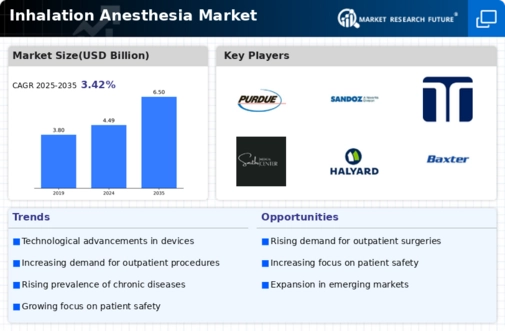
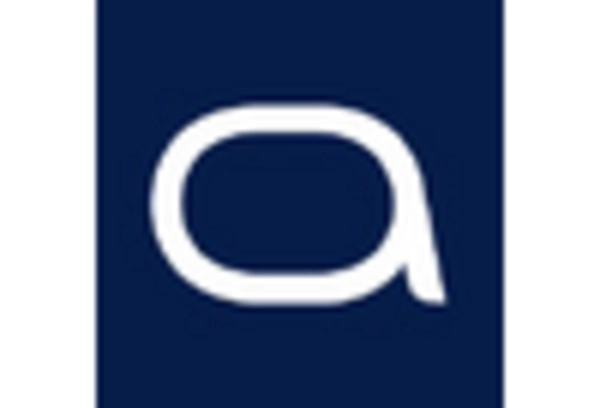
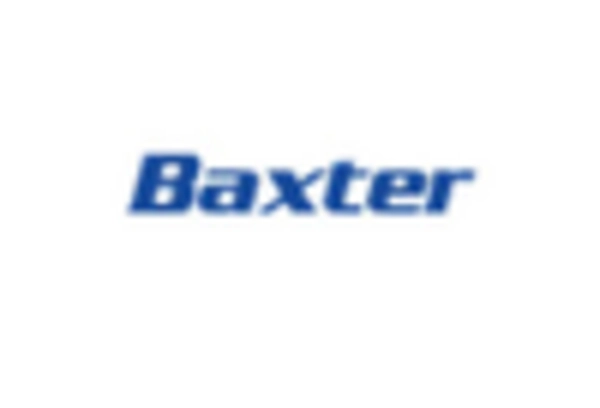
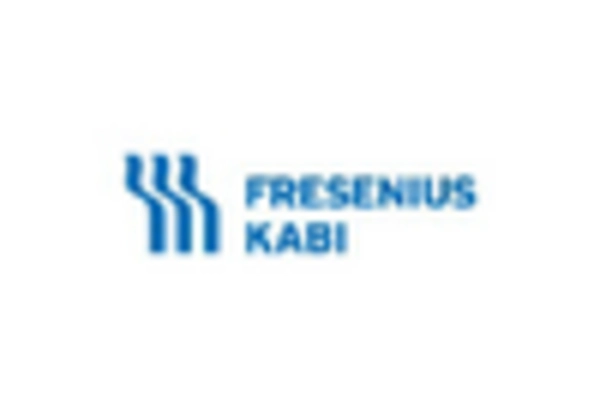
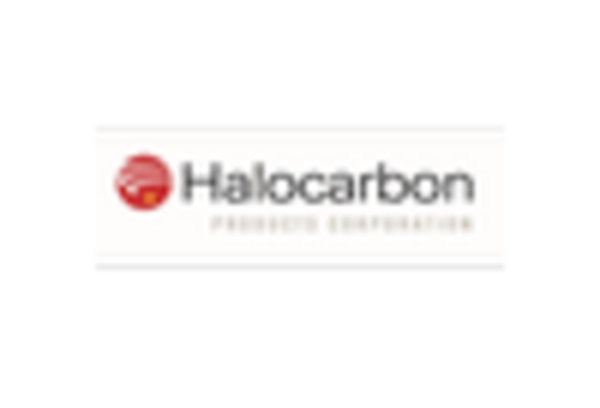
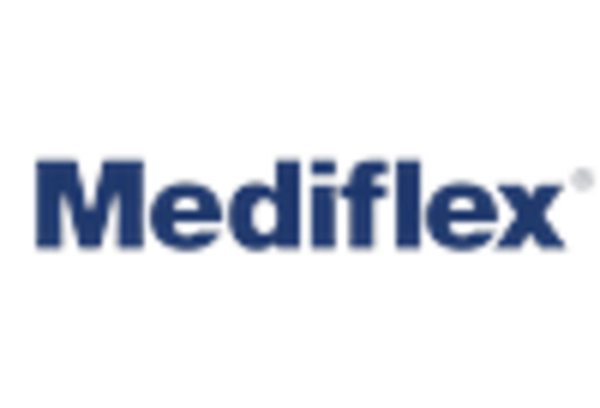
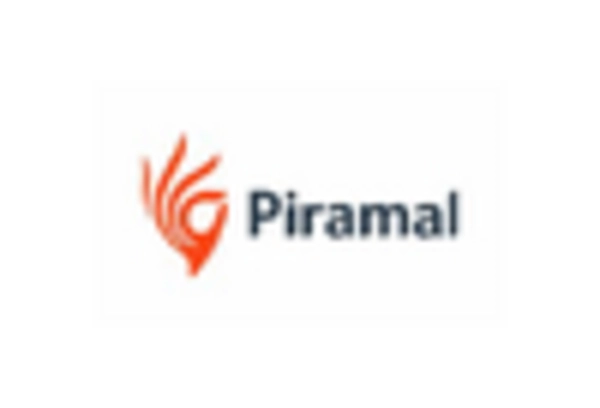









Leave a Comment